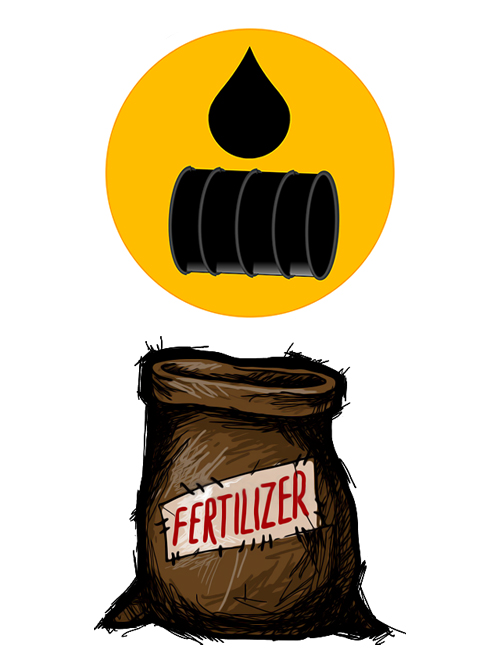
- Soil is essential for the survival and development of all living beings. Humans get their basic requirements of food, clothing, and shelter from plants that grow in soil.
- The word soil is derived from a latin word ‘solum’ meaning earthly material in which plants grow.
- Soil is made up of four components:
-
- Inorganic materials such as minerals that are derived from parent rocks.
- Organic materials such as humus that are derived from dead organisms by their decomposition.
- Air and water occupying the pores between the soil particles.
- Organisms such as bacteria, fungi, algae, earthworms, ants etc.
- Soil is classified on the basis of its nature and composition. In India we find six main types of soils:
-
- Alluvial soil, which is rich in loam and clay.
- Black soil, which has predominantly clay.
- Red soil, which is sandy to loam.
- Mountain soil, which is stony sandy soil.
- Desert soil, which is sandy and poor in organic carbon.
- Laterite soil, which has porous clay rich in iron and aluminium hydroxides.
- Soil is the ultimate source of all food production, since plants form the base of all ecological food chains and plants grow in soil and derive nutrition from it. Humans depend on soil for food, clothing, furniture, medicine etc. Even other animals, insects receive food by grasing on plants.
- Soil serves as a natural habitat for microbes, plants, and animals. The bacteria and microbes present in soil help in environmental balance like retaining of moisture, decay of dead bodies of animals, plants etc., scavenging of waste and other toxic chemicals. Animals like, rats, mice, guinea pigs, mongoose, squirrel etc live in the burrows made in the soil. Reptiles like snakes, lizard live in the soils. Soil provides a safe shelter to many living beings and promotes biodiversity.
- Soil contains essential minerals and elements like phosphates, sulphates, calcium, zinc, magnesium and many more. These elements are provided to plant during growth and from there to all the living forms.
- It contains calcium, iron, which provide a source for medicines, cosmetics, talcum powders etc.
- It contains many metals like iron, bauxite, zinc etc .
- Soil contents like gravel, clay, sand, etc. are widely used for construction of homes, buildings, roads etc.
- Soil absorbs water when there is rain, this water from soil evaporates in sunlight, making the air cooler. Also, rain water stored in the deeper layer of soil is available for plants, forests to grow, and even as ground water for drinking and cultivation.

- Use of insecticides, pesticides and fertilisers used for agricultural purposes are a major cause for soil pollution. Nitrogen is a common component in fertilisers that changes the acidity of soil and over the long run can make the soil infertile, and make it unsuitable for vegetation such as plants, crops, and forests.
- Acid rain can change the soil chemistry of an area, and it can also leach out the nutrients inside it.
- Mining and quarrying permanently harm the surrounding soil. The surface is exposed to erosion, which destroys the quality of the land. The chemicals from mining practices leak into soil, which pollutes it and also, the nearby water bodies.
- Oil or chemical spills contaminate the soil with petroleum hydrocarbons, lead, mercury, and other heavy metals.
- Runoff from factory and household waste is also harmful for soil.
- The waste from landfills pollutes soil and also the nearby water bodies.
- Soil pollution poses a serious threat to the growth of crops, plants and animals. These crops and animals absorb much of the pollution from the soil, which lacks quality nutrients and may contain some poisonous substance. Then this gets passed on to the human beings as they consume them, leading to health problems amongst human beings.
- Soil pollution impacts the chemistry of the soil and decrease soil fertility leading to soil yield. Most plants are unable to adapt when the chemistry of the soil changes so radically in a short period of time. Fungi and bacteria found in the soil that bind it together begin to decline, which further leads to soil erosion. As the soil fertility decreases, it makes the land unsuitable for agriculture and any local vegetation to survive.
- Soil pollution leads to emission of toxic and foul gases from landfills pollutes the environment and causes serious effects on health of some people. The unpleasant smell causes inconvenience to other people.


 Biodiversity
Biodiversity